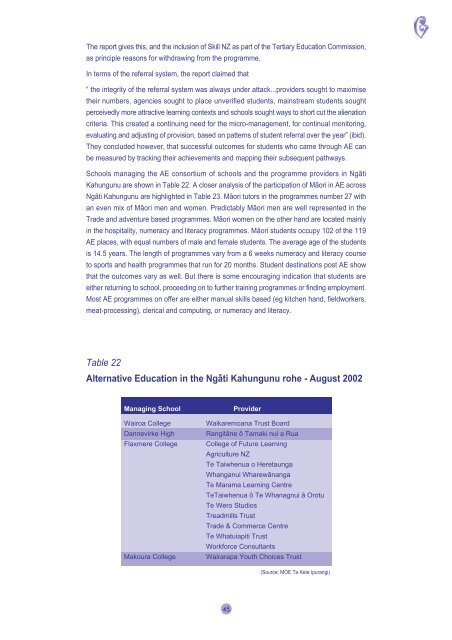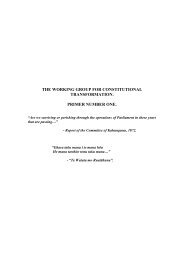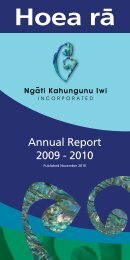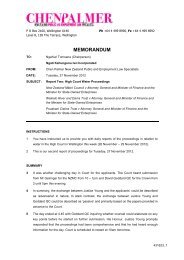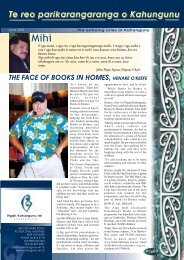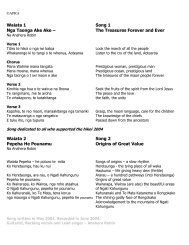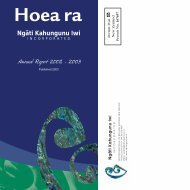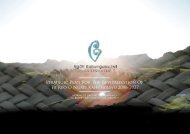Matauranga Strategy - NgÄti Kahungunu Iwi Incorporated
Matauranga Strategy - NgÄti Kahungunu Iwi Incorporated
Matauranga Strategy - NgÄti Kahungunu Iwi Incorporated
Create successful ePaper yourself
Turn your PDF publications into a flip-book with our unique Google optimized e-Paper software.
The report gives this, and the inclusion of Skill NZ as part of the Tertiary Education Commission,<br />
as principle reasons for withdrawing from the programme.<br />
In terms of the referral system, the report claimed that<br />
“ the integrity of the referral system was always under attack...providers sought to maximise<br />
their numbers, agencies sought to place unverified students, mainstream students sought<br />
perceivedly more attractive learning contexts and schools sought ways to short cut the alienation<br />
criteria. This created a continuing need for the micro-management, for continual monitoring,<br />
evaluating and adjusting of provision, based on patterns of student referral over the year” (ibid).<br />
They concluded however, that successful outcomes for students who came through AE can<br />
be measured by tracking their achievements and mapping their subsequent pathways.<br />
Schools managing the AE consortium of schools and the programme providers in Ngäti<br />
<strong>Kahungunu</strong> are shown in Table 22. A closer analysis of the participation of Mäori in AE across<br />
Ngäti <strong>Kahungunu</strong> are highlighted in Table 23. Mäori tutors in the programmes number 27 with<br />
an even mix of Mäori men and women. Predictably Mäori men are well represented in the<br />
Trade and adventure based programmes. Mäori women on the other hand are located mainly<br />
in the hospitality, numeracy and literacy programmes. Mäori students occupy 102 of the 119<br />
AE places, with equal numbers of male and female students. The average age of the students<br />
is 14.5 years. The length of programmes vary from a 6 weeks numeracy and literacy course<br />
to sports and health programmes that run for 20 months. Student destinations post AE show<br />
that the outcomes vary as well. But there is some encouraging indication that students are<br />
either returning to school, proceeding on to further training programmes or finding employment.<br />
Most AE programmes on offer are either manual skills based (eg kitchen hand, fieldworkers,<br />
meat-processing), clerical and computing, or numeracy and literacy.<br />
Table 22<br />
Alternative Education in the Ngäti <strong>Kahungunu</strong> rohe - August 2002<br />
Managing School<br />
Wairoa College<br />
Dannevirke High<br />
Flaxmere College<br />
Makoura College<br />
Provider<br />
Waikaremoana Trust Board<br />
Rangitäne ö Tamaki nui a Rua<br />
College of Future Learning<br />
Agriculture NZ<br />
Te Taiwhenua o Heretaunga<br />
Whanganui Wharewänanga<br />
Te Marama Learning Centre<br />
TeTaiwhenua ö Te Whanagnui ä Orotu<br />
Te Wero Studios<br />
Treadmills Trust<br />
Trade & Commerce Centre<br />
Te Whatuiapiti Trust<br />
Workforce Consultants<br />
Wairarapa Youth Choices Trust<br />
(Source: MOE Te Kete Ipurangi)<br />
45


